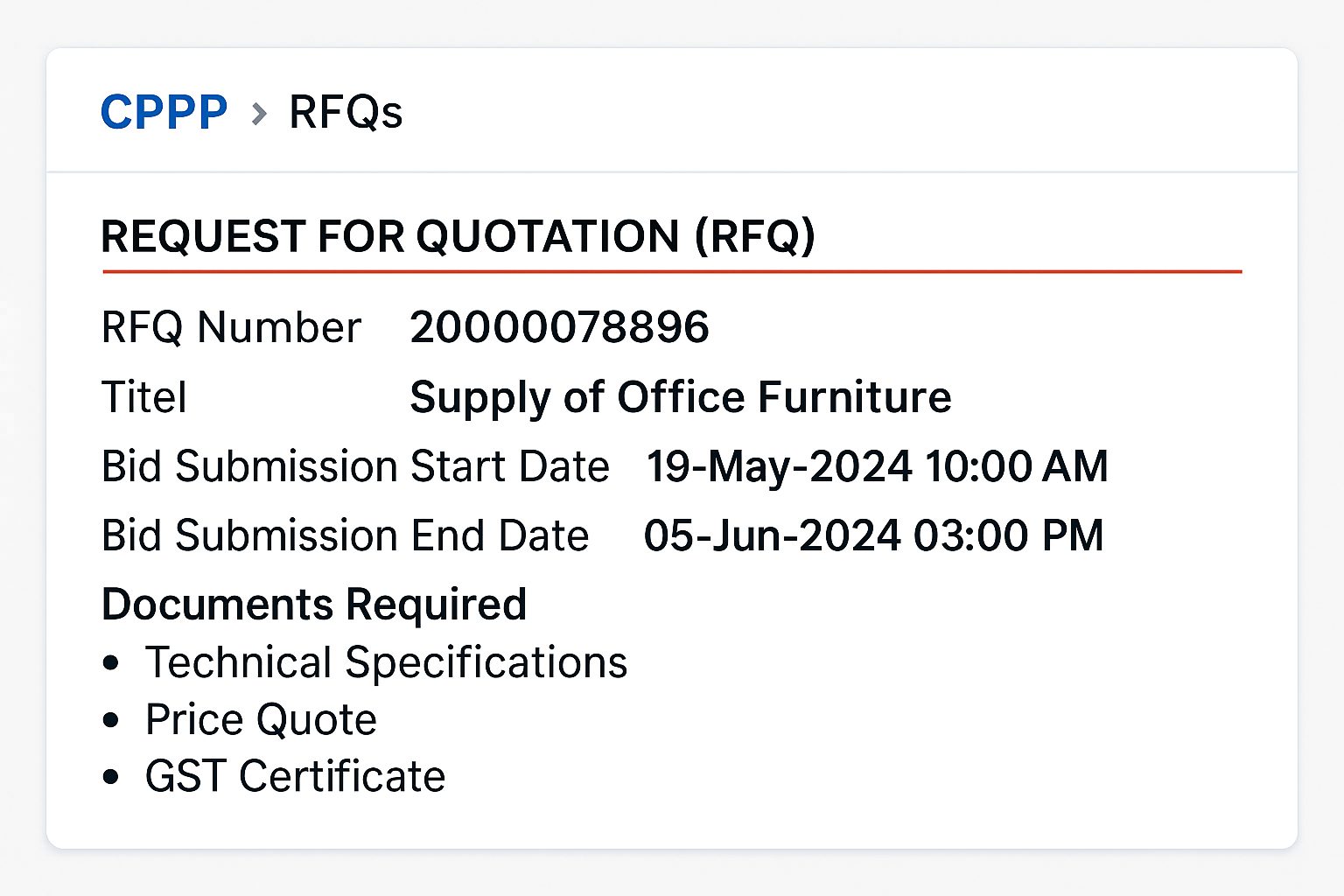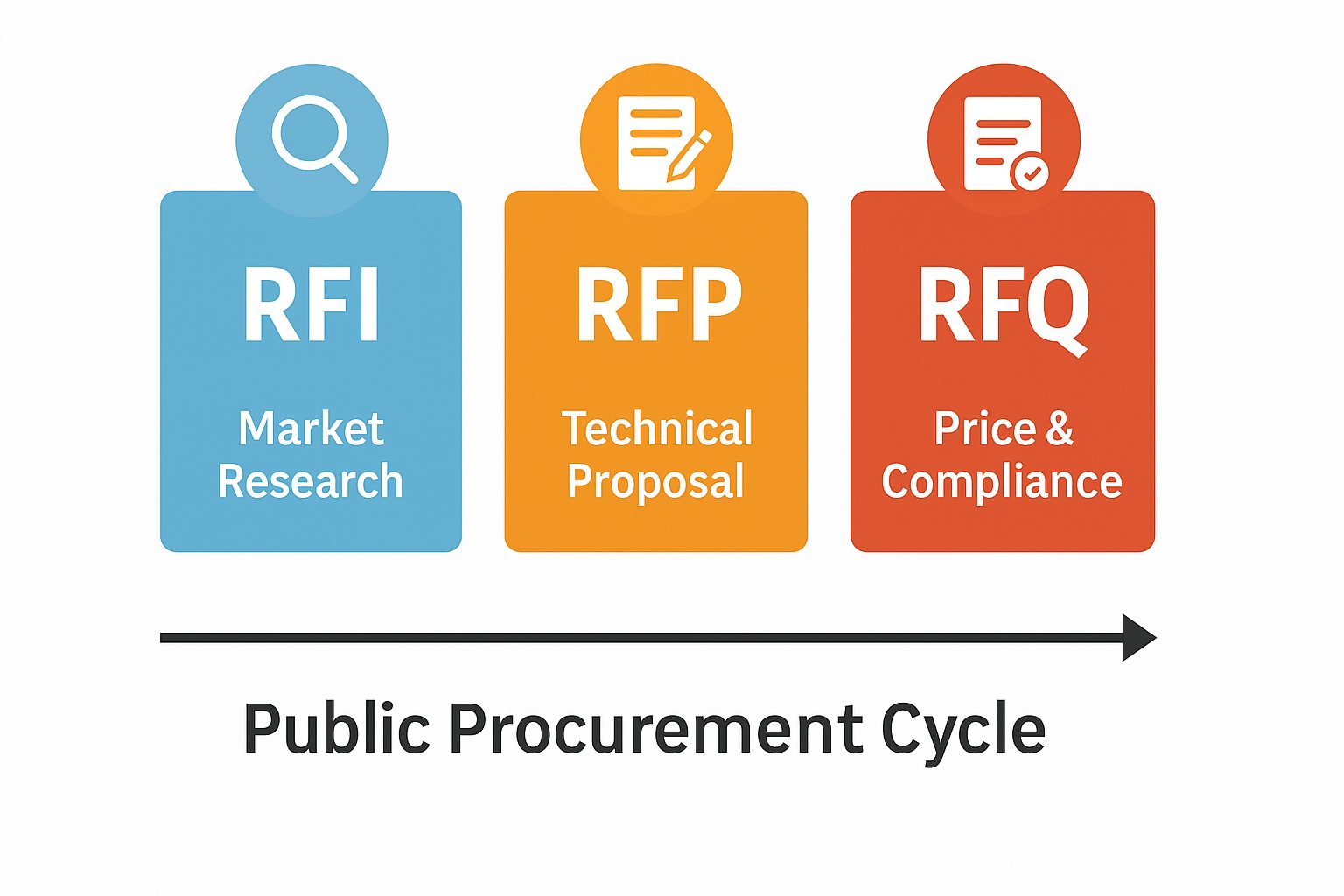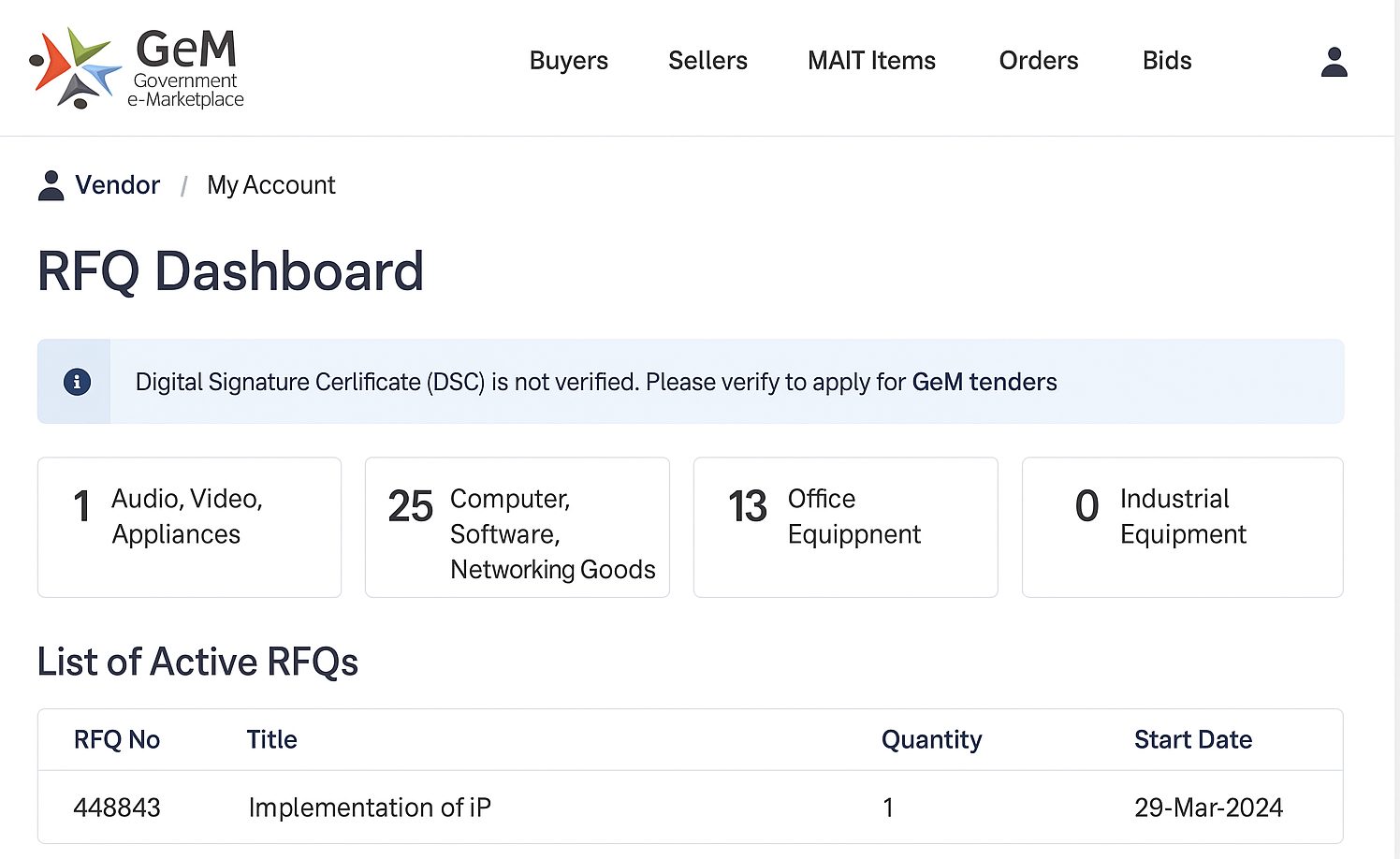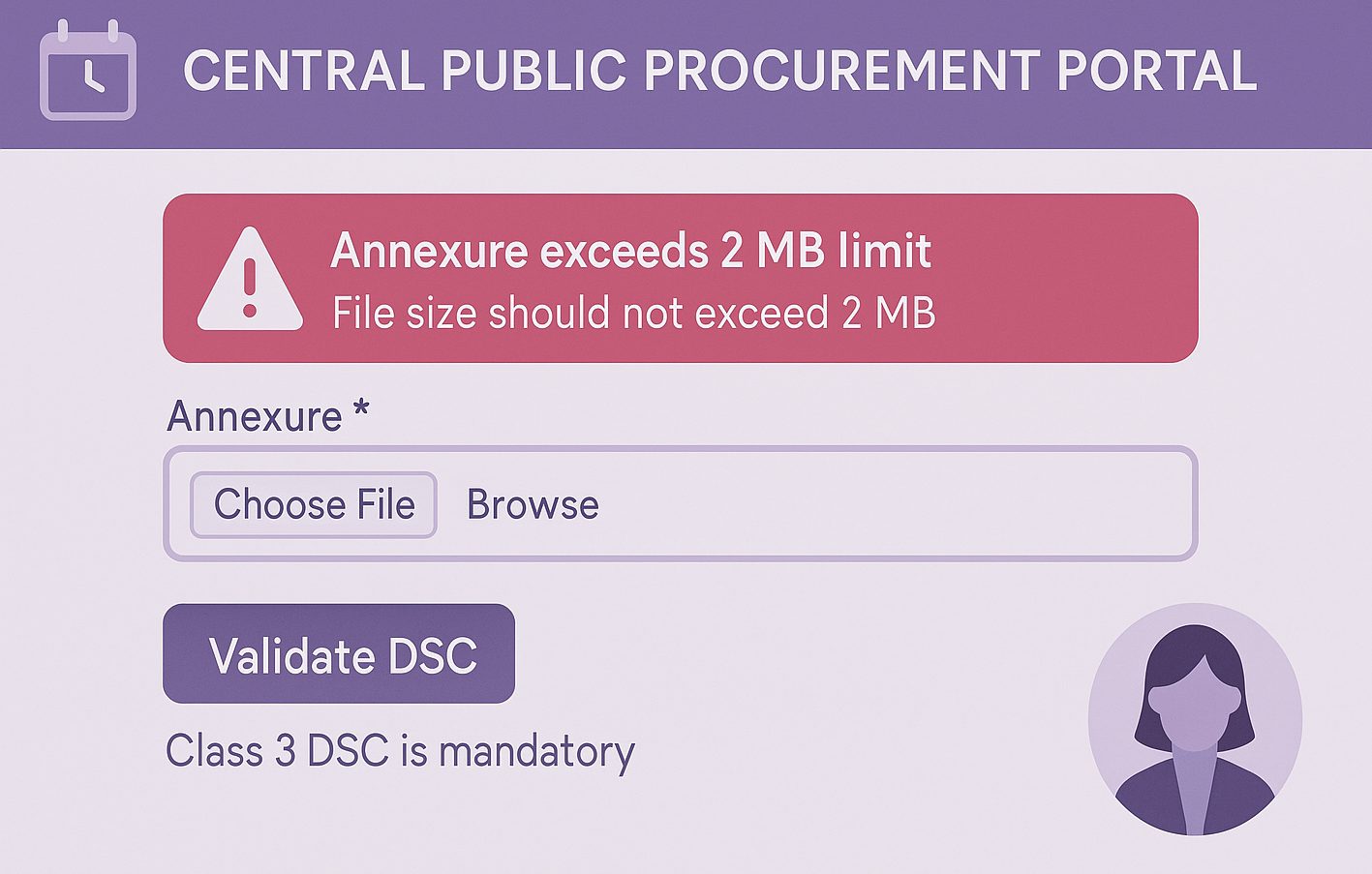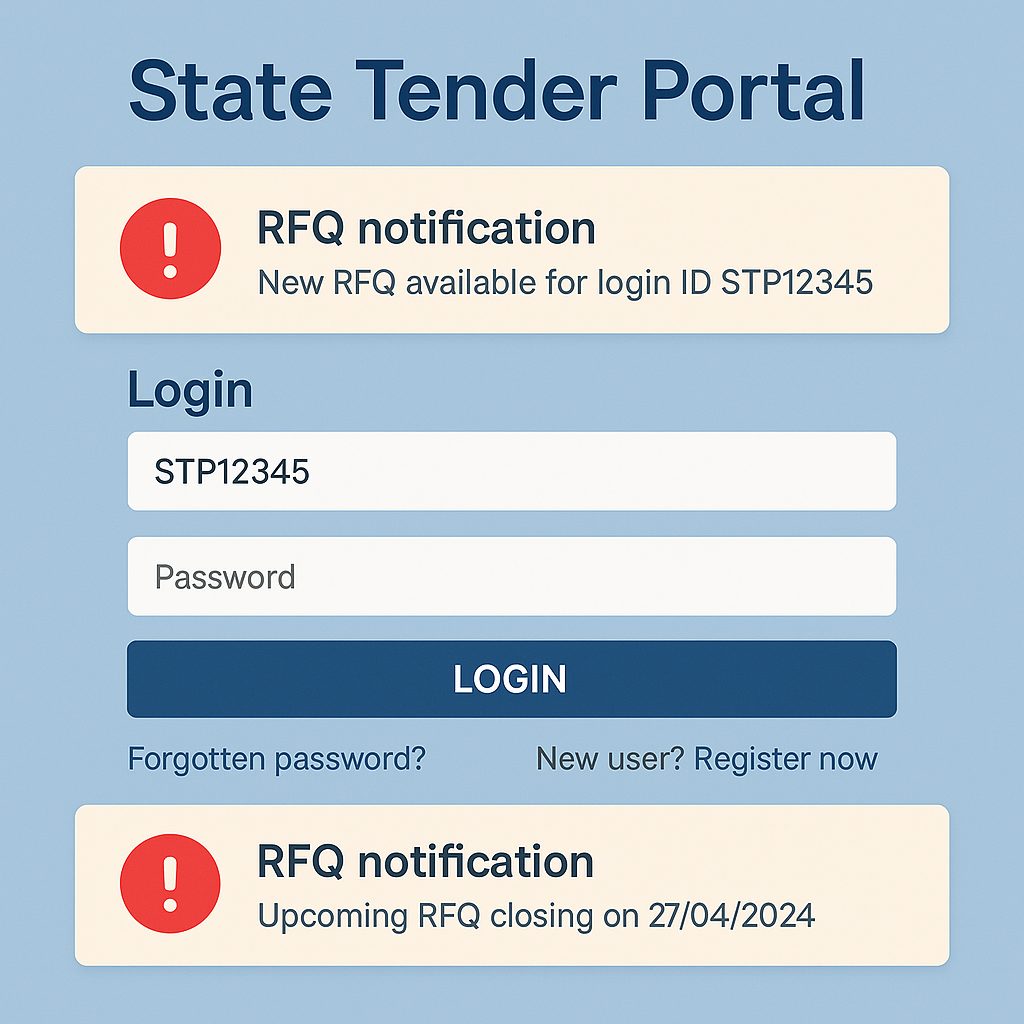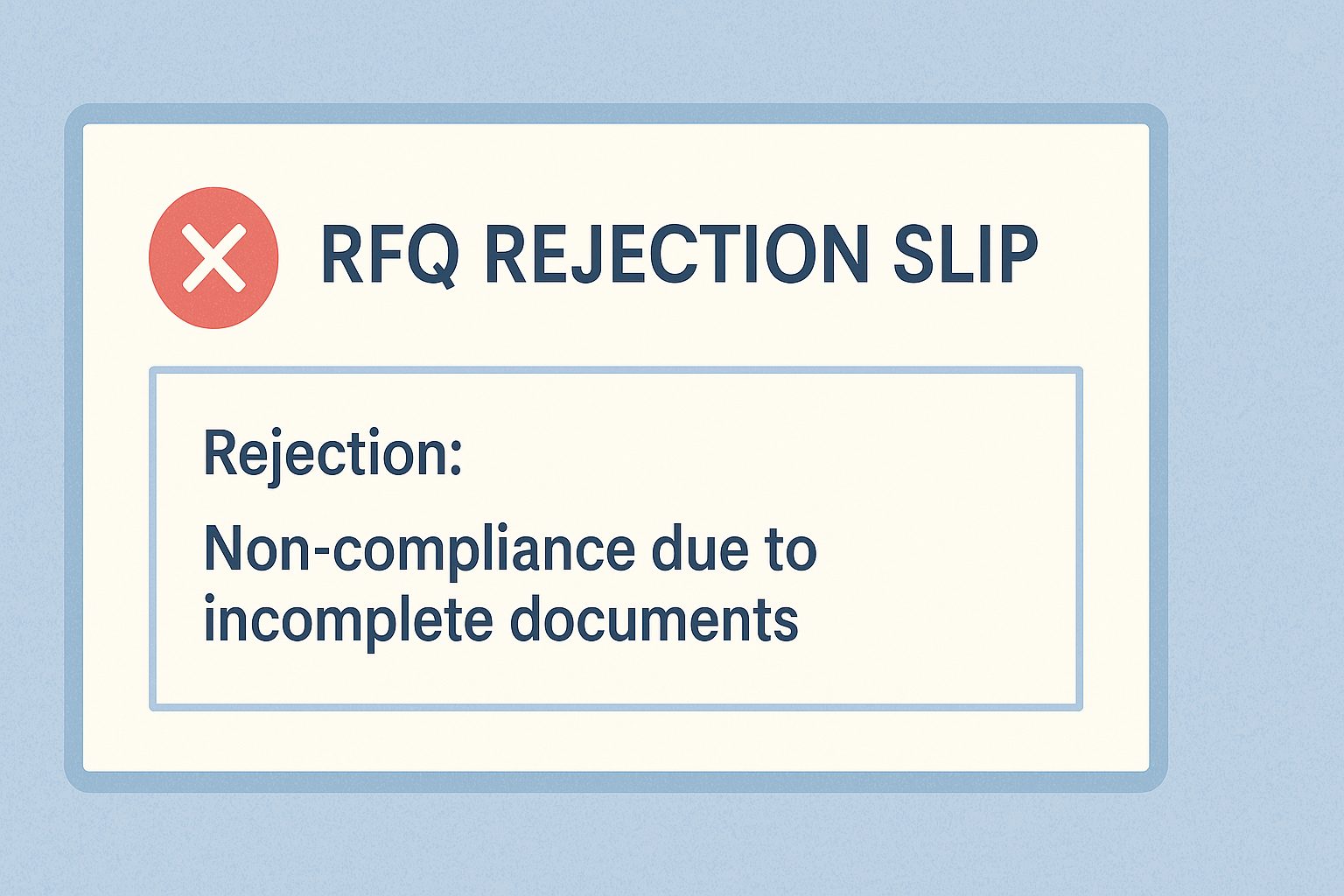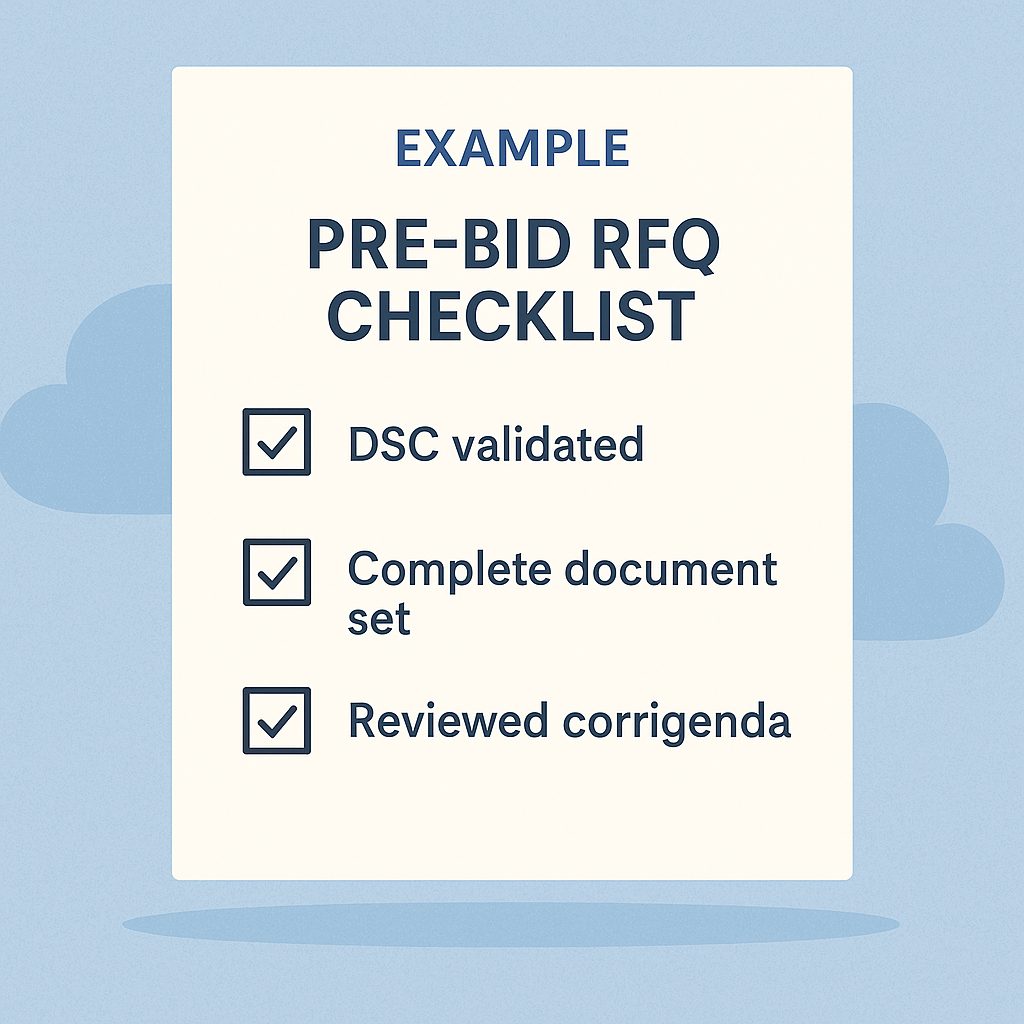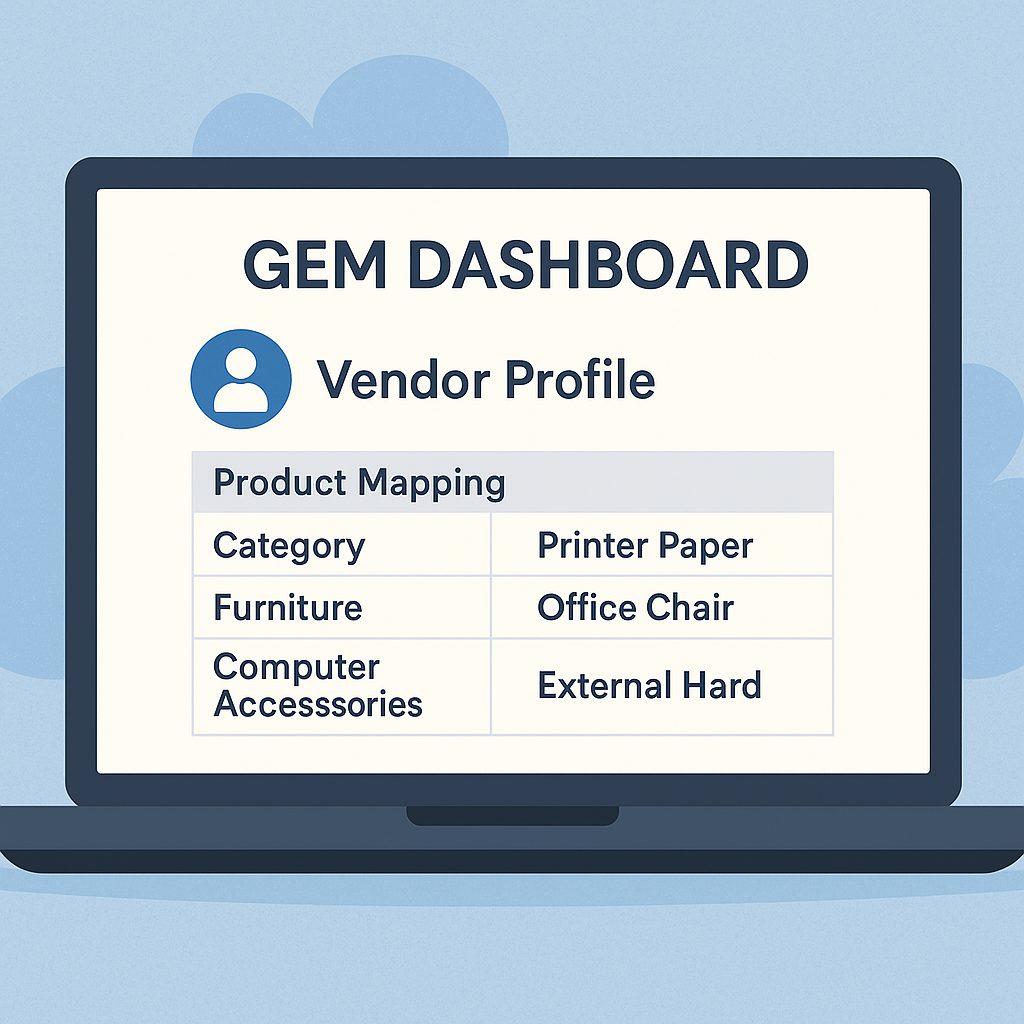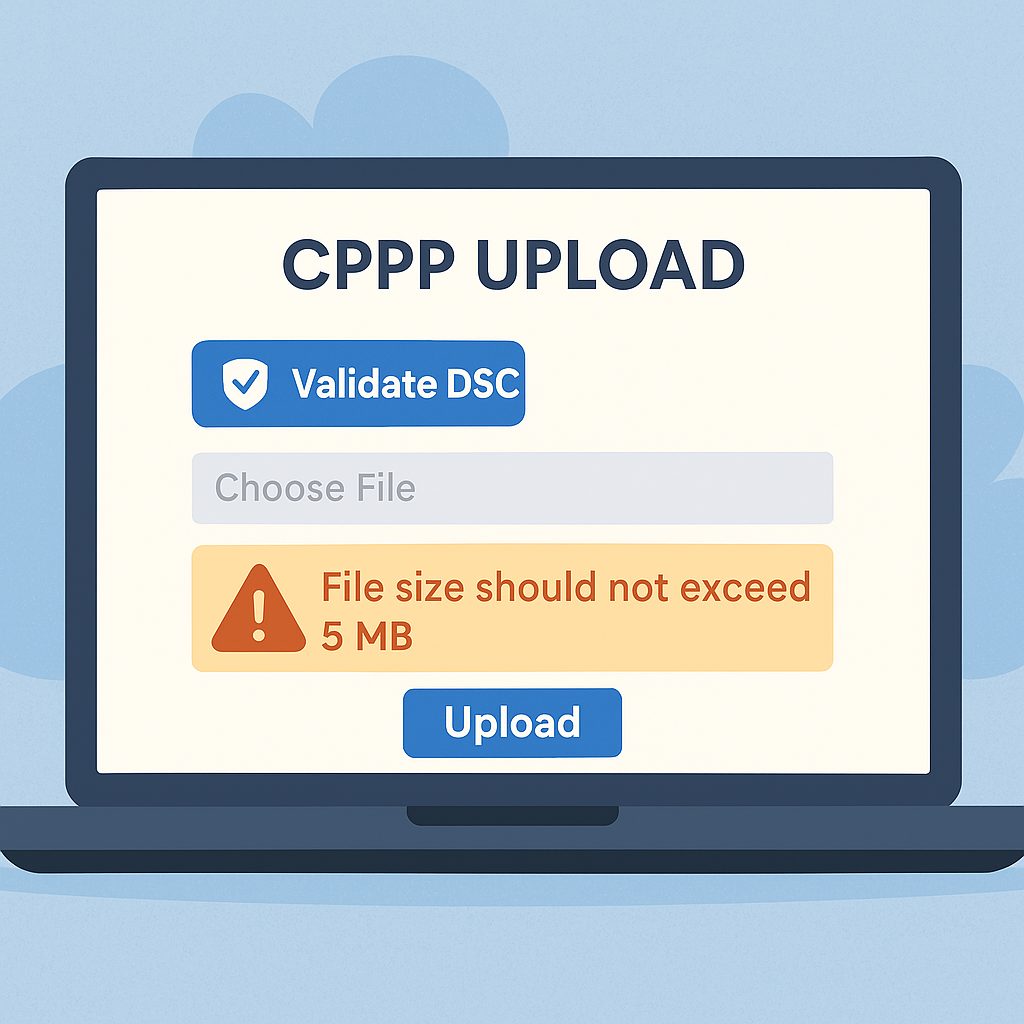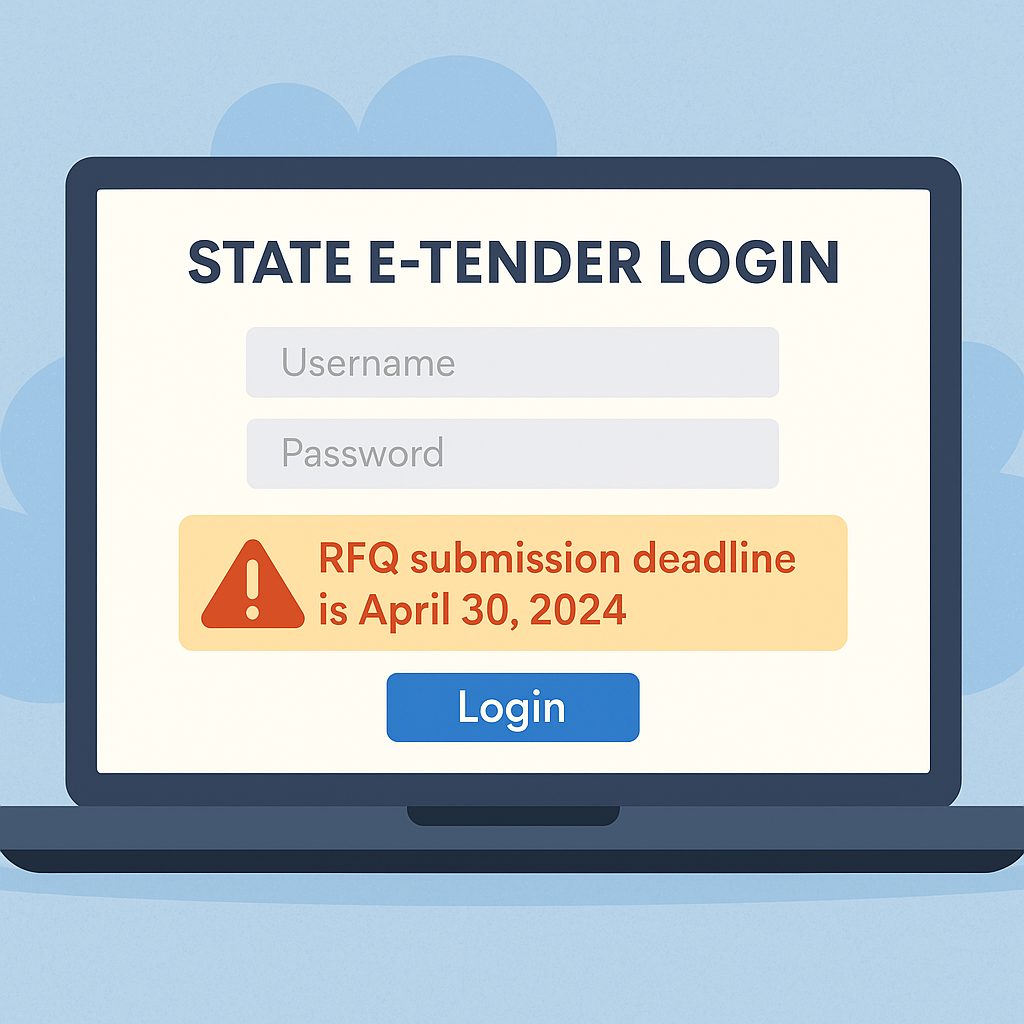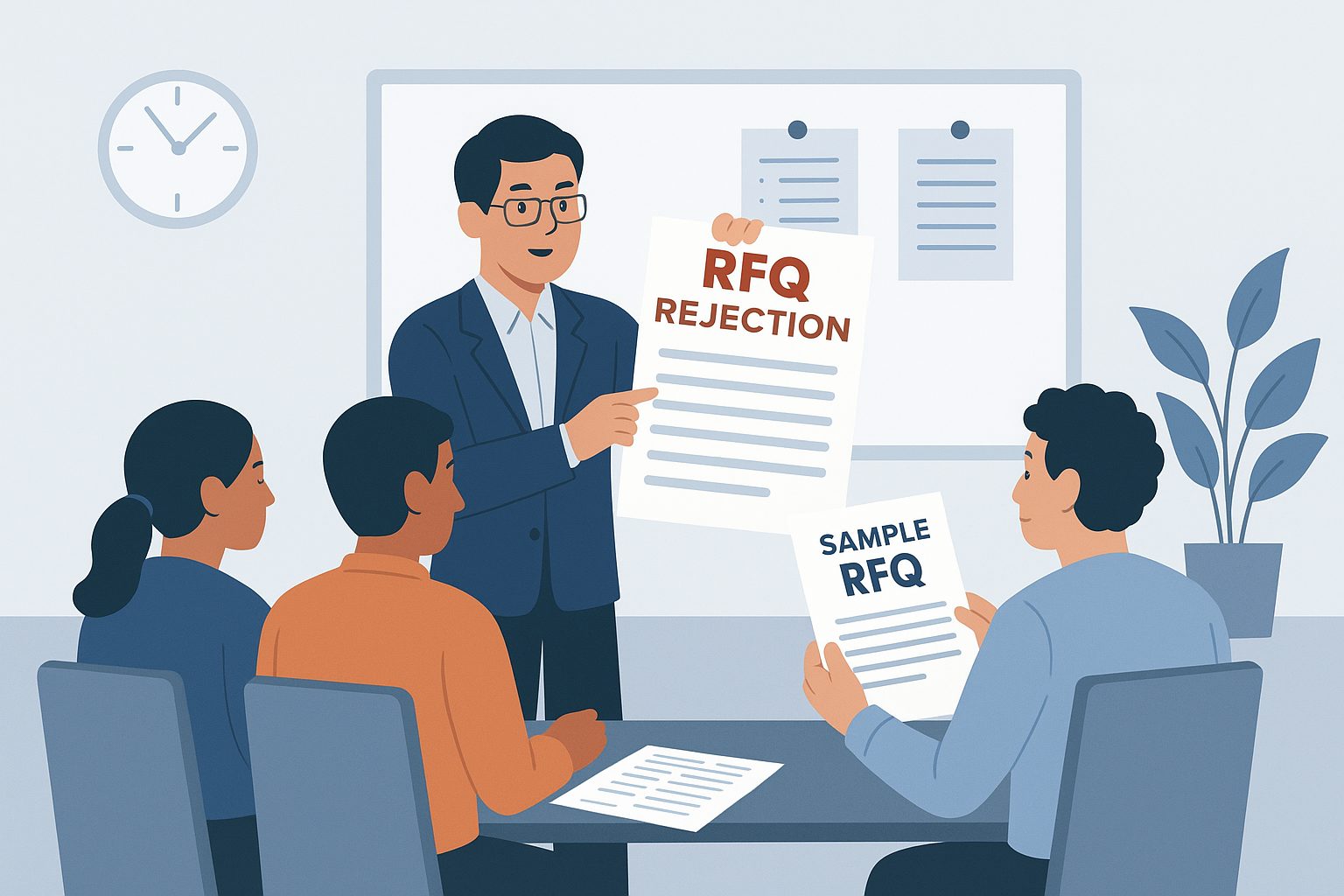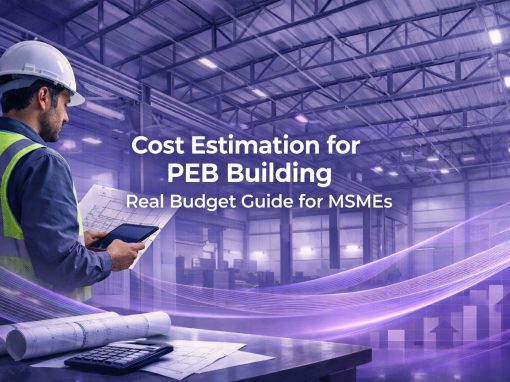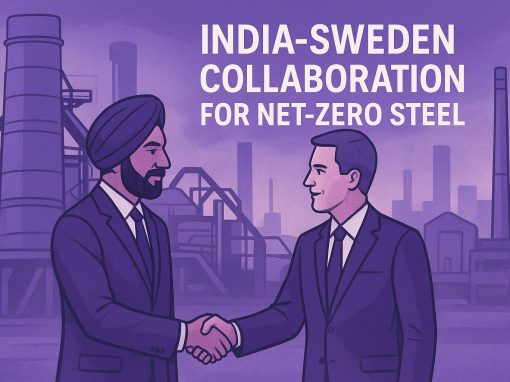Table of Contents
Public procurement is one of the fastest ways for an MSME to scale, but very few new vendors know where to begin. The first acronym they encounter is usually RFQ. On paper, the RFQ full form is Request for Quotation. In reality, it is the stage that decides whether a business even enters the competition.
What usually happens is this: a buyer issues an RFQ with clear requirements, and vendors are expected to respond with pricing and compliance documents. Many first-time bidders treat it as a routine formality. That is a mistake. On portals like GEM and CPPP, an RFQ is more than a price request. It is a test of eligibility, documentation, and attention to detail.
Here’s where MSMEs slip. A missing turnover certificate, a DSC that has expired without the vendor noticing, or an annexure uploaded in the wrong format. Any one of these can trigger rejection. And the system rarely gives second chances.
Understanding the rfq meaning in tender is therefore critical. It is not a piece of jargon to gloss over. It is the gateway that determines if an MSME’s bid will move forward or be discarded at the first filter. This guide lays out how RFQs work on GEM, CPPP, and state portals, the common rejection points, and the practical steps vendors need to take to avoid them.
What is RFQ?
In procurement language, RFQ full form is Request for Quotation. It is the stage where a government buyer states exactly what they need and asks registered vendors to quote a price. On the surface, it looks simple. In practice, it is one of the toughest filters MSMEs face on platforms like GEM, CPPP, or state e-tender sites.
An RFQ is not the same as an RFP or an RFI. A Request for Proposal (RFP) demands technical details and a structured plan, while a Request for Information (RFI) is used when the buyer is only studying the market. The RFQ sits in the middle. The buyer already knows what they want; they now want to see who can supply it at the right price, with the right paperwork in place.
Here’s the catch for MSMEs. There is no room to “explain” capabilities in an RFQ. Everything rests on the documents and the accuracy of the submission. If the GST certificate uploaded is outdated, or if the digital signature has expired, the system rejects the bid. Some vendors even lose out because they typed a date wrong in the annexure or exceeded the PDF size limit.
For small businesses, the rfq meaning in tender is clear: it is not just a request for rates. It is a compliance test. The tendering authority is checking if a vendor is serious, qualified, and ready to deliver. If that checkpoint is cleared, only then does price begin to matter.
How RFQs Work in Indian e-Tender Platforms
The government does not use one single portal for quotations. MSMEs face three different systems most of the time — GEM, CPPP, and state-run portals. Each one looks similar on the surface, but the rules and errors vendors deal with are not the same.
GEM (Government e-Marketplace)
On GEM, an RFQ is tied directly to the way a business registers. If the vendor chooses the wrong product category at the start, the system will not even show relevant RFQs later. That mistake is more common than it sounds. Another trap is the bidder ID. A firm may complete its registration, but unless the bidder ID is live and linked with a valid DSC, the quote cannot go through. Vendors often see last-minute rejections because the DSC driver is outdated or the token is not recognised in the browser.
CPPP (Central Public Procurement Portal)
The CPPP is used by ministries and big PSUs. Its RFQs are strict on format. File-size caps are a constant headache — 2 MB or 5 MB depending on the document. Many MSMEs compress PDFs in a hurry, and the text becomes unreadable. That alone can get a bid rejected. Another issue is the digital signature. CPPP accepts only Class 3 DSCs, yet small vendors often upload with Class 2 because they already had one for GST filing. The system flags it instantly and blocks submission.
State e-Tender Portals
The state portals vary widely. Some want a local turnover certificate, others insist on a professional tax number or VAT history. A business that qualifies easily on GEM can fail at the state level because of these local conditions. Technical issues are common too — slow logins during peak hours, error screens during annexure uploads, or OTP failures on mobile-linked authentication. Unlike GEM, many state sites lack quick support desks, so vendors miss deadlines without a fix.
Key Point
An RFQ is not the same everywhere.
- GEM, the risk is wrong category mapping or DSC failure.
- CPPP, file-size limits and certificate type are the biggest hurdles.
- State portals, eligibility rules change from state to state.
MSMEs that treat all platforms as identical lose valuable bids before they even start competing.
Common MSME Challenges in RFQs
Most MSMEs think losing a bid comes down to price. In reality, most rejections happen long before the quotation is even reviewed. The problems are paperwork gaps, technical errors, and small details that are easy to miss.
Eligibility Gaps
Every RFQ carries hidden filters. Turnover requirements, experience certificates, and correct NIC codes are common. If a business registers under the wrong category, the portal blocks them. One auto-parts supplier in Pune tried for a state contract but uploaded an “engineering services” code. The system flagged it, and the bid never made it to evaluation.
Document Issues
This is where vendors lose the most ground. Outdated GST certificates, turnover proofs without the auditor’s seal, or annexures with the wrong file name — all of these trigger rejections. On GEM, the upload tool is unforgiving. A Tiruppur textile unit submitted its balance sheet with a local accountant’s sign-off. The RFQ clearly required a CA-certified copy. The bid was thrown out without a second look.
Technical Errors
Digital signatures fail more often than MSMEs admit. A DSC token that works for GST filing may not pass CPPP checks. Sometimes the browser does not read the driver at all. Add to this the strict file-size caps — 2 MB for annexures in CPPP — and vendors are caught off guard. Many discover the error only at the last minute, with no window to re-upload.
Missed Corrigenda
Buyers publish corrigenda when they change dates or specifications. Vendors who log in only on the final day often never see the update. Their bid ends up non-compliant even though the paperwork is perfect. It is one of the quietest but most damaging causes of rejection.
Steps to Improve RFQ Success for MSMEs
Winning an RFQ is less about quoting the lowest price and more about staying compliant from start to finish. MSMEs that treat it like a box-ticking exercise usually fail. The ones that prepare properly, double-check their documents, and watch the portals closely are the ones who keep qualifying.
Prepare a Document Set in Advance
Create a fixed folder with GST, PAN, Udyam certificate, balance sheets, and auditor-signed turnover proofs. Keep both scanned PDFs and compressed versions ready because portals like CPPP reject files over 2 MB. Vendors that try to prepare documents on the deadline often miss small details like seals or signatures.
Track DSC Validity and Compatibility
Every RFQ submission relies on a working DSC. Renewal reminders are essential. Class 3 DSCs are mandatory on CPPP, and GEM also rejects Class 2 tokens. MSMEs should install drivers on multiple browsers and test them ahead of deadlines. Too many bids are lost because the DSC failed to authenticate at the final step.
Read Corrigenda Daily
Corrigenda are not optional notes — they change the rules. Some extend deadlines, others alter eligibility criteria. Vendors should check the portal at least once a day after an RFQ is released. Submitting against outdated terms is an easy way to lose.
Create a Pre-Bid Checklist
Before clicking “submit,” run through a short list: all documents uploaded, DSC tested, file names correct, annexures attached, certificates valid. Assign someone in the firm to tick these off. This five-minute habit prevents most avoidable rejections.
Use Alerts and Tender Tracking Tools
Most MSMEs rely on manual checking, but portals allow email and SMS alerts. Linking them properly helps vendors catch corrigenda, last-minute clarifications, and rescheduled deadlines. Missing these updates is the same as missing the tender.
Bottom line: Success in RFQs is not about luck. It is about discipline. Vendors that prepare their documents early, test their DSC, and monitor portals daily improve their qualification rate significantly.
Choosing the Right Platform for Your Business
Most MSMEs think more registrations mean more chances. They sign up on GEM, CPPP, and state portals all at once. What happens instead is wasted effort and a pile of rejections. Each system has its own logic, and not every business fits everywhere.
GEM (Government e-Marketplace)
GEM is designed for bulk and standard goods. Stationery, furniture, IT equipment, hospital supplies — categories where the buyer knows exactly what they want. It’s easier for small firms to get listed here, but GEM is strict about paperwork. Certificates expire, bidder IDs lapse, DSCs fail. Ignore the alerts and your account gets blocked without much notice.
CPPP (Central Public Procurement Portal)
CPPP is a different game. Railways, defence, oil PSUs — these buyers float RFQs that are heavy on technical requirements and paperwork. This platform suits MSMEs with solid credentials and audited turnover records. The portal itself has no patience for errors. A DSC mismatch or a 2 MB annexure that’s even slightly over the limit, and the upload is rejected outright. Deadlines are final; there’s no grace period.
State Portals
State tender sites are unpredictable. Some are basic, others copy CPPP, but most come with their own rules. Local tax registrations or turnover proofs often decide eligibility. A Udyam certificate alone may not be enough. Technical stability is also a problem. Portals slow down near deadlines, OTPs fail, logins time out. Vendors who wait until the last night usually lose bids because the system crashes.
Bottom line: GEM fits standard products, CPPP handles high-value contracts, state portals matter for local supply. An MSME that tries to chase all three spreads itself too thin. Pick the ground carefully, or risk losing bids before they are even read.
Conclusion
An RFQ is not just another form. For MSMEs, it is the gatekeeper. Buyers look at it to see if the vendor is organised, compliant, and serious. Price comes later.
The problems that trip most small firms are simple: expired DSC, wrong annexure, a corrigendum that went unnoticed. None of these are about capacity. They are about preparation.
The approach that works is boring but effective. Keep a folder of updated documents. Test the DSC before the deadline, not on the last day. Open the portal daily and scan for updates. These habits stop rejections before they start.
And pick battles carefully. GEM is built for standard goods. CPPP suits firms with audited records and sector approvals. State portals can be valuable for local supply, but the paperwork is different and the systems are not always reliable.
If there is one rule to remember, it is this: clear the compliance filter first. Only then does your price matter. The MSMEs that treat RFQs this way stop wasting bids and start winning contracts.
Looking for the right government tenders for your business?
Tata nexarc helps MSMEs, manufacturers, and service providers find relevant government tenders across India. Discover tenders by location, category, or department, track deadlines, and get notified on time — with complete support to help you apply confidently.
FAQs
Can an MSME submit an RFQ response without a GST registration?
Is one Digital Signature Certificate (DSC) enough for all tender portals?
Do RFQs allow consortium or joint bidding?
What happens if an MSME misses the RFQ submission deadline?
Are MSMEs given price preference in RFQs?
Do all RFQs require an EMD (Earnest Money Deposit)?
How often are corrigenda issued for RFQs?
Can vendors withdraw or edit an RFQ submission after uploading?
Are service-based MSMEs treated differently from product suppliers in RFQs?
What’s the role of Udyam Registration in RFQ participation?
Ananya Mittal blends a background in data science with a passion for writing, contributing to Tata Nexarc’s efforts in creating insightful, data-informed content for MSMEs. Her work focuses on exploring sector-specific challenges and opportunities across procurement, logistics, and business strategy. She is also involved in leveraging analytics to strengthen content performance and deliver actionable insights to India's growing B2B ecosystem.


